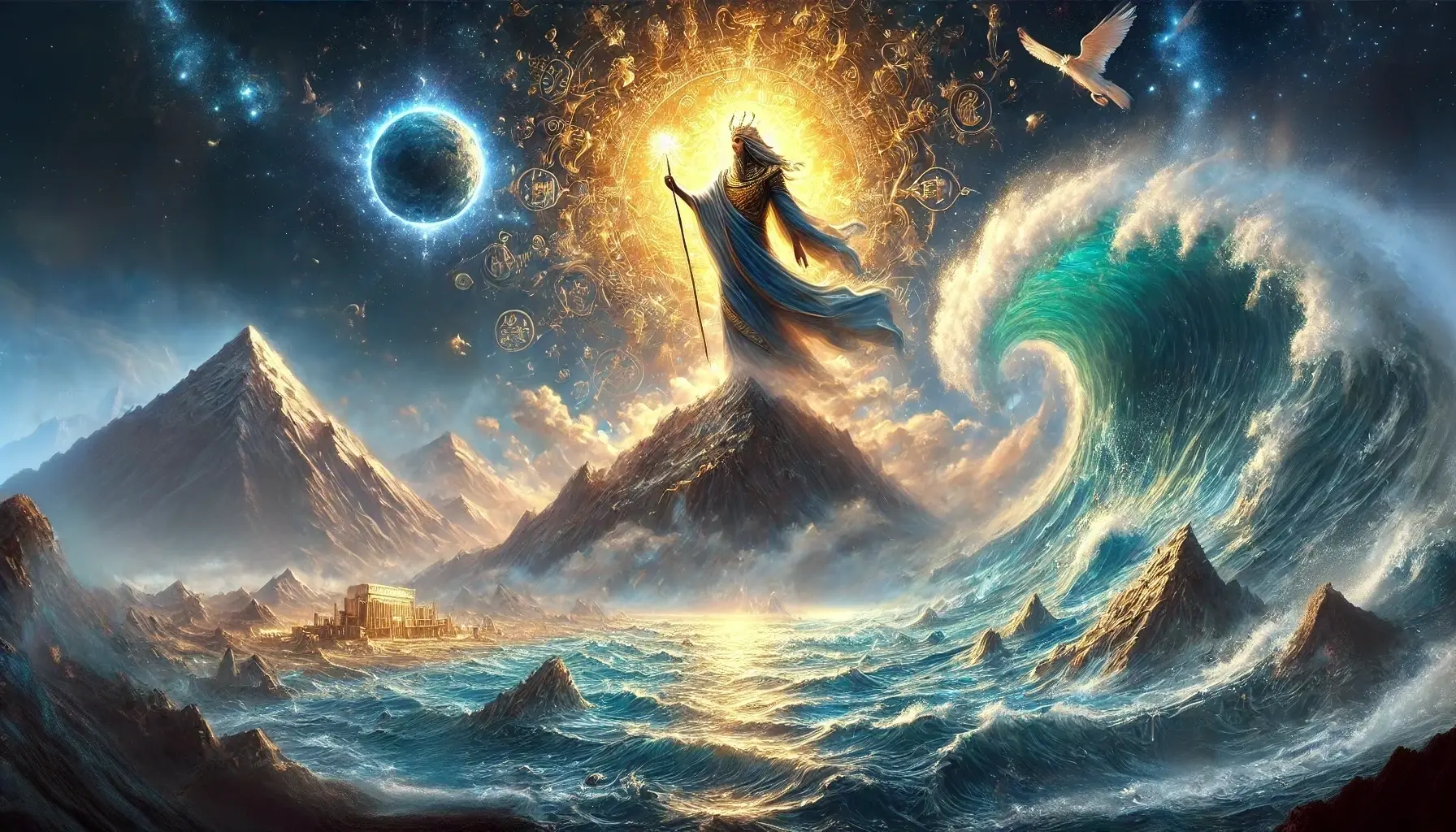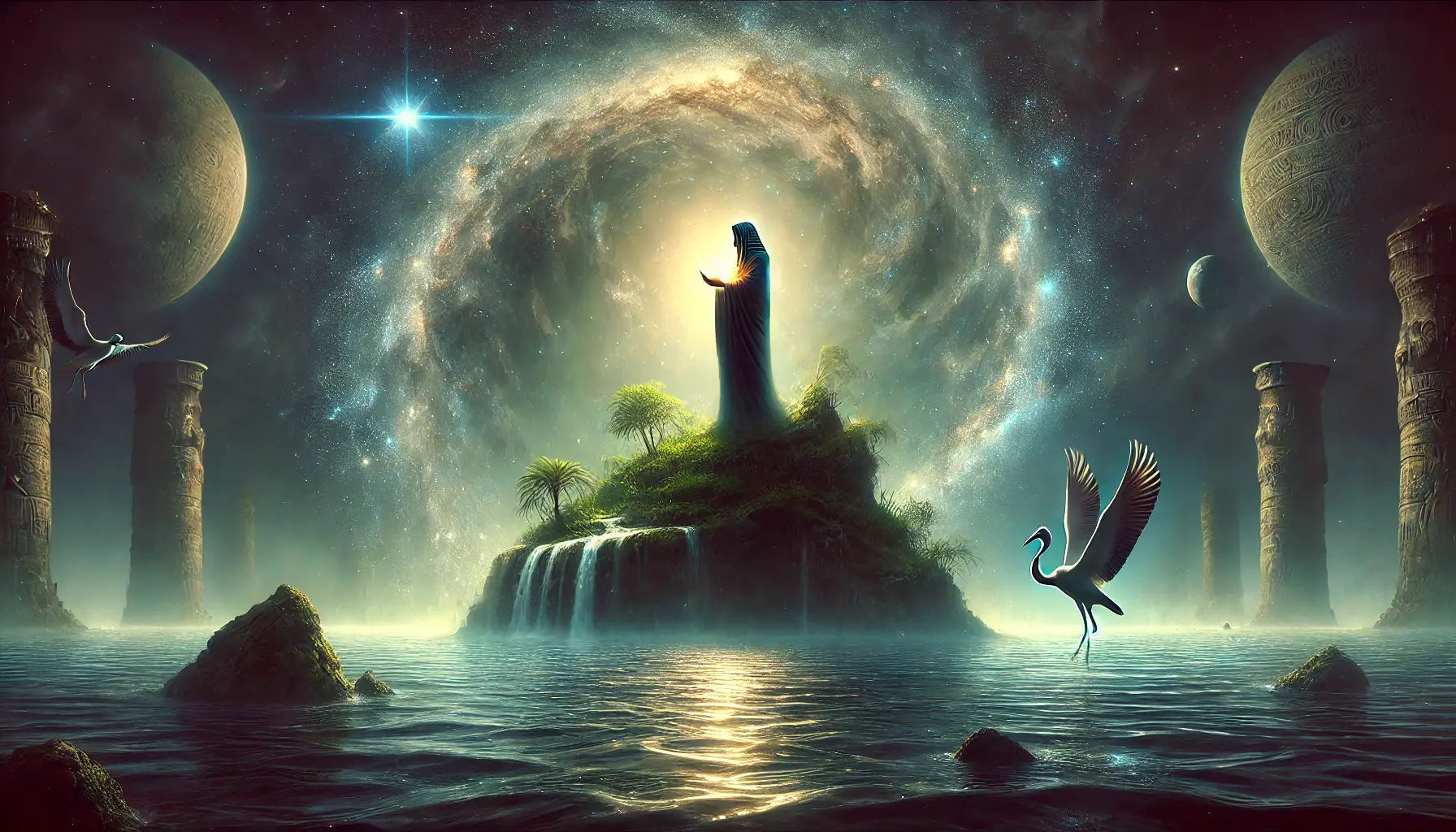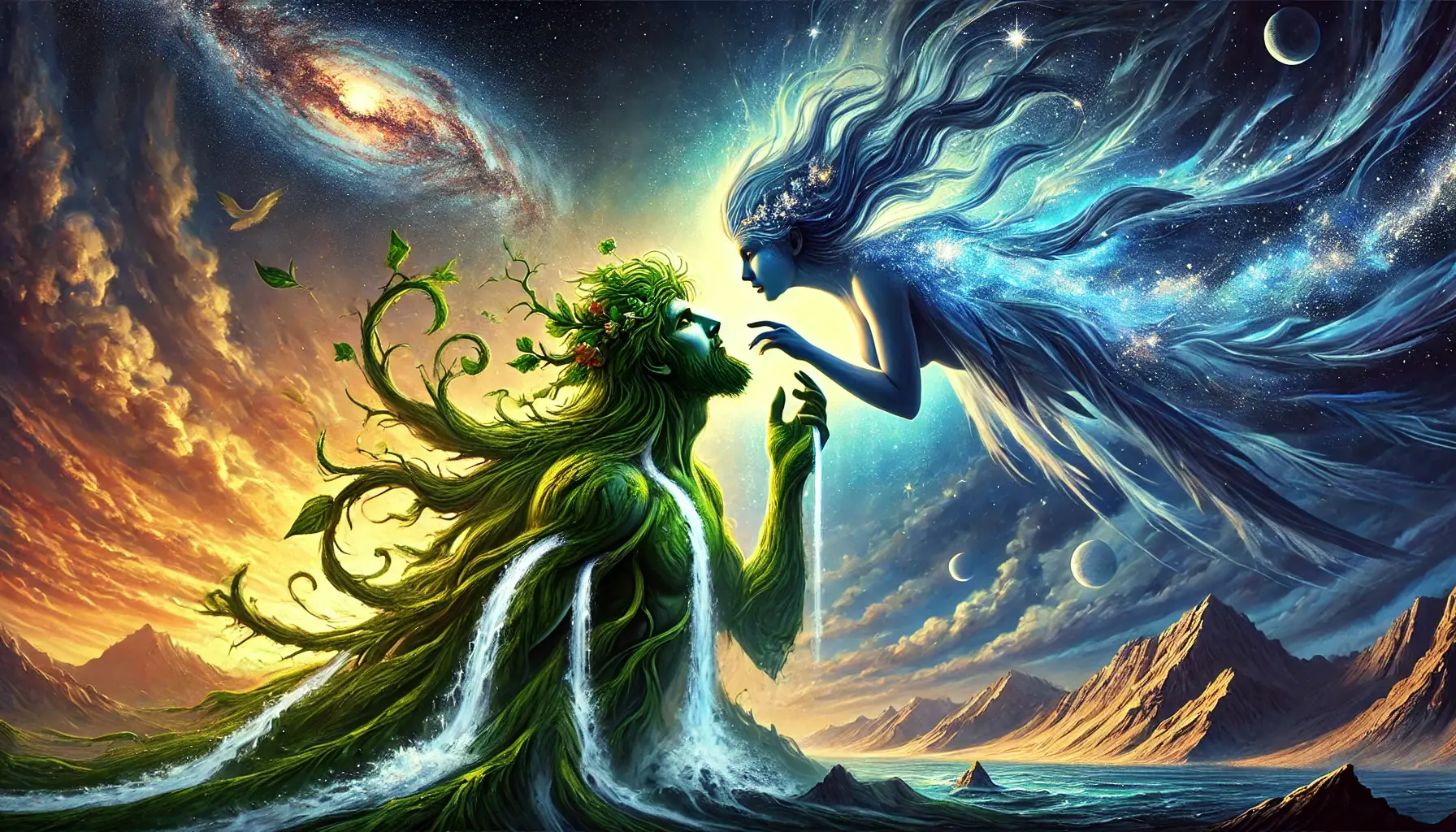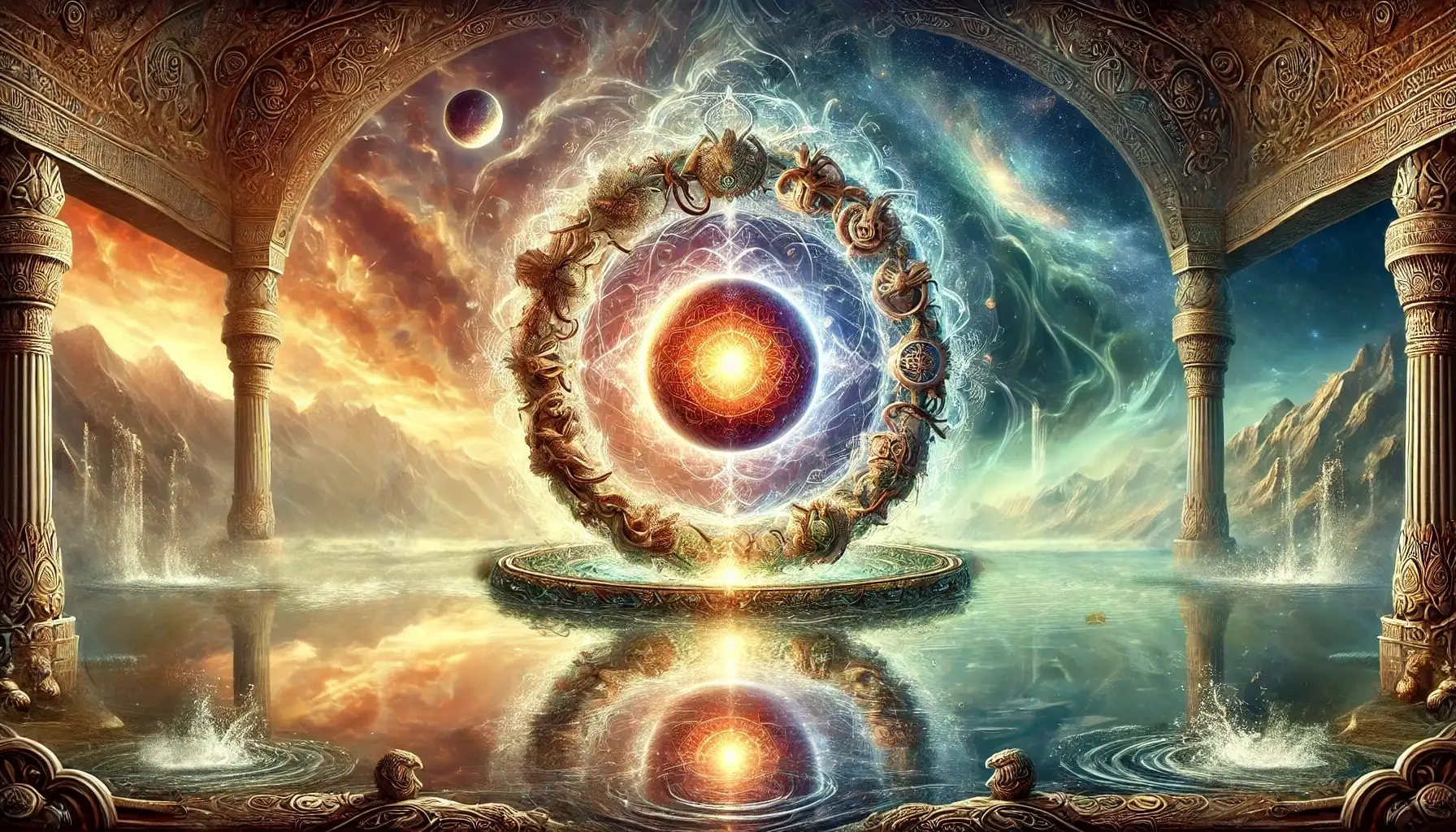The Primal Silence
In the beginning, there was silence, an infinite stillness that stretched beyond the edges of understanding. The land of Kemet lay unformed, a void cradled in the embrace of Nun, the formless waters of chaos. Darkness cloaked the nascent world, and no gods yet walked upon its shifting tides. Time itself held its breath, waiting for a force to break the endless, soundless night.
From this abyss rose Ptah, the great shaper, the eternal artisan. He emerged not with the fury of storms nor the heat of blazing suns but with a quiet authority, his presence woven from thought and speech. Ptah stood alone, his figure a beacon of clarity within the formless waters. In his heart, he carried the essence of all that would come to be, and upon his lips rested the power to bring it forth.
The Word and the World
Ptah’s voice shattered the silence. Each word he spoke rippled through Nun, a vibration that shaped and reshaped the chaos. “Let there be land,” he declared, and the primordial mound, the Benben, rose from the waters. It was solid yet sacred, the first anchor in a shifting world. Upon this mound, Ptah placed his divine feet, claiming it as the foundation of creation.
Through the power of his tongue, Ptah conceived the gods. He did not craft them from clay nor carve them from stone but summoned them from the depths of his mind. Atum, the self-created, was born from Ptah’s thought, charged with the task of bringing forth the lineage of gods. Atum stood atop the Benben, his golden radiance piercing the dark waters, and breathed life into Shu, the god of air, and Tefnut, the goddess of moisture. From these two came Geb, the earth, and Nut, the sky, whose eternal union and separation defined the boundaries of existence.
As Ptah spoke, so the cosmos unfolded. His words became laws, immutable and divine. Stars took their places in Nut’s celestial body, rivers carved their courses into Geb’s skin, and the rhythm of Ma’at, the eternal balance, was established. Every creature, every grain of sand, every breath of wind owed its existence to Ptah’s decree. His voice was the first sound, and his thought the first cause.
The Art of the Divine Craftsman
Unlike the other gods, who reveled in the splendor of their creations, Ptah worked tirelessly, his hands unseen but ever-present. He was not a god of spectacle but of precision, shaping the unseen framework upon which all life rested. In his mind, he envisioned the tools of humanity: the plow to till the earth, the chisel to carve stone, the harp to weave melodies. These gifts he imparted subtly, embedding them within the essence of existence, waiting for mortals to uncover them.
In Memphis, the heart of Ptah’s domain, the sacred art of creation was mirrored in the works of mortals. Here, the craftsmen and architects paid homage to their divine patron, invoking his guidance with every swing of the hammer, every stroke of the brush. They knew that in their hands lay the echo of Ptah’s divine will, and through their labor, they honored the first artisan.
The Struggle of Separation
Yet creation was not without pain. As Atum’s children, Geb and Nut, embraced in love, the cosmos threatened to collapse into chaos once more. Their union left no space for light or life to flourish. Seeing this, Ptah willed a separation. His word brought forth Shu, who lifted Nut high above Geb, stretching her body across the heavens. Stars sparkled in her form, while Geb’s surface grew verdant and fertile.
The separation was bittersweet. Geb wept for Nut, his tears forming the great rivers of Kemet, and Nut’s longing for her beloved sent rain to quench the earth. Yet from this distance, life emerged—plants, animals, and finally humans, born to dwell between the heavens and the earth. Ptah watched with quiet satisfaction, for the balance was his design, and every tear and every spark was part of the harmony he had envisioned.
The Temple of Thought
In time, mortals built a grand temple to Ptah in Memphis, the seat of his creative power. Here, priests and scholars sought to understand the mysteries of his mind. They spoke of the “heart and tongue,” the twin forces of thought and speech, as the keys to his divine work. For Ptah did not labor with his hands as mortals did; his creations were born from intellect and expression, crafted in the crucible of his mind and brought forth by the resonance of his words.
The temple itself was a marvel, its pillars carved with scenes of creation, its walls inscribed with hymns to the god who shaped the world. Within its sanctum stood a statue of Ptah, serene and unyielding, a reminder of the silent power that underpinned existence. Offerings of fine craftsmanship—jewelry, tools, and sculptures—were laid at his feet, tokens of gratitude from those who carried his spark within them.
The Eternal Resonance
Though Ptah’s voice no longer echoed through the heavens, its resonance endured. Each act of creation, whether by gods or mortals, bore his mark. The birth of a child, the building of a house, the carving of a statue—all these acts were whispers of his original decree. Even in times of strife, when the balance of Ma’at wavered and chaos threatened to return, the memory of Ptah’s voice offered solace. For his was the promise that order could emerge from disorder, that beauty could arise from formlessness.
The Lasting Image
As the sun dipped below the horizon, casting the land in hues of gold and crimson, a solitary craftsman worked in the fading light. His hands, calloused and steady, shaped a figure from alabaster—a small, humble likeness of Ptah. Each stroke of his chisel carried a quiet reverence, a connection to the divine craftsman who had shaped the world.
When the figure was complete, the craftsman paused, his breath caught in his throat. The statue’s face seemed to glow in the twilight, its serene expression mirroring the boundless calm of the god it honored. In that moment, the craftsman felt a stirring within him, an understanding that transcended words. He was not merely a maker of things but a vessel for Ptah’s eternal creativity, a thread in the vast tapestry of existence.
As the first stars pierced the deepening night, the craftsman placed the statue on his altar and knelt before it. He whispered a prayer, not of petition but of gratitude, and in the silence that followed, he felt the faintest echo of Ptah’s voice—a resonance that lingered in the stillness, promising that creation was not an act confined to the past but a living, breathing force that would endure as long as the world turned.



